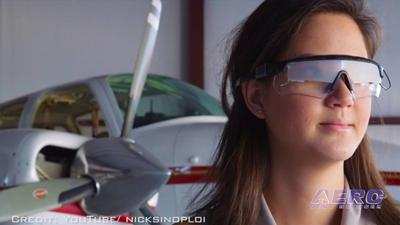Tales from the Hood
ICARUS Devices—a Wisconsin-based start-up founded by Nick Sinopoli in the wake of a friend’s aviation-related death—announced the U.S. Army has issued an Airworthiness Release authorizing use of the company’s ICARUS Device throughout the entirety of the service’s LUH-72A Lakota fleet.

Instructor Pilots providing training in all U.S. Army utility helicopters and seventy-percent of the overall Army helicopter fleet may now utilize the advanced view-limiting device to better simulate Instrument Meteorological Conditions (IMC) for purpose of better training pilots to conduct flight operations in IFR weather conditions.
In essence, the Light Utility Helicopter LUH-72A Lakota is a militarized iteration of the Airbus Helicopters H-145 (formerly the Eurocopter EC145) built by American Airbus Helicopters, Inc., a division of Airbus consortium. The aircraft is a light, twin-turbine-engine helicopter with a conventional four-blade main-rotor and a tail-boom-mounted, open (non-fenestron), anti-torque rotor. The LUH-72A Lakota is the basic rotary-wing and basic warfighting skills trainer at Fort Rucker—the U.S. Army’s principal helicopter training installation. The aircraft is utilized by the Army National Guard for homeland security, disaster-response, and medical evacuation missions. The Army currently operates a total of 463 LUH-72As.
The Instrument Conditions Awareness Recognition and Understanding System (ICARUS) is a smart View-Limiting Device (VLD). Such devices are utilized by civilian Certified Flight Instructors/Instrument (CFIIs) and military Instructor Pilots (IPs) to train student pilots in the high art of competently controlling and navigating aircraft solely by reference to flight-instruments under Instrument Meteorological Conditions (IMC)—such as those occasioned by clouds, fog, haze, heavy rain, blowing snow, and dust.
By virtue of its ability to rapidly change opacity, the ICARUS smart VLD allows flight-instructors to alter student pilots’ in-flight visibility, thereby creating dynamic, scenario-based flight-training environments. The ICARUS device's polymer dispersed liquid-crystal visor cutout is controlled by an App or manually via a power control unit manipulated by the CFII/IP. The device can be tailored to any airframe and weighs a scant 2.5-ounces.
Developed in 2014 and patented in 2016, the ICARUS device is currently utilized by numerous civilian flight-schools, law-enforcement agencies, and Part 135 air-taxi and air-ambulance operators. Whether applied to primary IFR training or professional pilots’ recurrent training events, the ICARUS device is eminently effective and conducive to use in aircraft as disparate as Cessna’s 172 Skyhawk, Gulfstream’s G-650, and the U.S. Army’s LUH-72A Lakota.

For Army Aviators, the ICARUS device promises to improve three key aspects of instrument training. During Inadvertent Instrument Meteorological Conditions (IIMC) training events, ICARUS simulates rapid reductions in pilot visibility, thereby evoking the startle effect and forcing emergency transitions to instrument flight. Secondly, the ICARUS device enhances IFR proficiency by mimicking real world weather conditions during practice IFR approaches. Finally, by replicating marginal visibility conditions, the ICARUS device allows CFIIs/IPs to assess students’ IFR decision-making skills—a salient component of Pilot-in-Command (PIC) check rides.
At a per-unit cost of $1,250, the ICARUS device is within the fiscal purview of even small flight-schools. What’s more, the system’s superiority to conventional IFR training hoods—dove-gray horrors despised in equal measure by the greenest student-pilots and saltiest ATPs —is apt to spark interest and enthusiasm amongst both instrument students and CFIIs, in so doing, driving up flying hours, training quality, check-ride performance, and bottom-line.
 ANN's Daily Aero-Term (05.10.24): Takeoff Roll
ANN's Daily Aero-Term (05.10.24): Takeoff Roll Aero-News: Quote of the Day (05.10.24)
Aero-News: Quote of the Day (05.10.24) Airborne 05.06.24: Gone West-Dick Rutan, ICON BK Update, SpaceX EVA Suit
Airborne 05.06.24: Gone West-Dick Rutan, ICON BK Update, SpaceX EVA Suit Airborne 05.03.24: Advanced Powerplant Solutions, PRA Runway Woes, Drone Racing
Airborne 05.03.24: Advanced Powerplant Solutions, PRA Runway Woes, Drone Racing Aero-News: Quote of the Day (05.11.24)
Aero-News: Quote of the Day (05.11.24)




